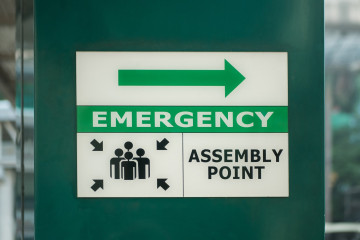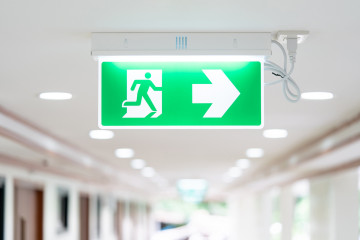

Emergency Preparedness
Do you have any questions?

- United States
- Services
- Emergency Preparedness
Emergency Preparedness
The Critical Business Case for Emergency Preparedness
Emergencies can happen at any time. The most effective way to handle a crisis is to prepare in advance with an Emergency Action Plan. The Occupational Safety & Health Administration (OSHA) requires written Emergency Preparedness Plans for many businesses, and specific businesses have additional regulations due to their role in the country's infrastructure or their handling of hazardous materials.
A comprehensive emergency response program ensures employee safety, protects company assets, and allows for swift recovery following a disaster. According to the Federal Emergency Management Agency (FEMA), 25% of companies do not reopen after an emergency. A robust emergency action plan is vital for business continuity and can prevent downtime, lost profits, and injury.
Several factors are making emergency preparedness more challenging and necessary than ever:
- Hybrid Work Models: The shift to hybrid work has created new complexities that require updated planning for offices and call centers.
- Climate Threats: Extreme weather events like floods and wildfires are occurring in new areas, and many companies' existing plans don't account for them.
- Workplace Violence: New regulatory requirements for workplace safety and violence are being implemented in jurisdictions like California and New York.
- Psychological Impact: A robust plan should also have a human-focused approach that considers the psychological impact and recovery for employees after an emergency.
Proven Expertise and Global Reach in Emergency Preparedness
Antea Group is uniquely positioned to provide emergency preparedness services by leveraging deep expertise in environmental, health, and safety consulting. Our approach is not a "one size fits all" solution. Instead, we guide clients to create practical, evergreen programs that evolve with their business needs.
We work with clients across their entire portfolio (e.g., offices, data centers, warehouses, etc.) to assess specific risks and create a better, compliant plan. The scenarios addressed in a plan are customized based on the location and type of facility. We also focus on training and implementation, creating site-specific tools, and performing audits to assess the required investment.
Our expertise is defined by global reach and local know-how. As a founding Associate of Inogen Alliance, we have access to emergency response requirements for businesses across 70+ countries. This allows us to consistently deliver work in any location worldwide through a single point of contact, ensuring a well-organized response to emergencies impacting global sites.
Our emergency preparedness services include:
- Writing plans and developing site-specific implementation tools.
- Conducting drills and drill assessments.
- Arranging or providing training (e.g., General Awareness Training, Emergency Response Team Training, Fire Prevention).
- Personal Emergency Evacuation Plans (PEEPs).
- Home-based and hybrid model ERP revisions.
- Lone Worker Policy for data centers and offices.
- Audits for office, call center, data center, and data hall compliance.
- Regulatory tracking for ERP and construction requirements for data centers.
Strategic Partnership with TagEvac for Advanced Emergency Evacuation Solutions
Antea Group is committed to providing our clients with best-in-class solutions, which is why we partner with TagEvac, a leading provider of innovative emergency evacuation systems and training. TagEvac's solution offers businesses a clear, consistent, and globally applicable process for managing both evacuation and invacuation situations.
The TagEvac system is a physical, color-coded tagging process that provides a clear, real-time overview of an evacuation. Instead of relying on time-consuming roll calls or complex internet-dependent systems, the TagEvac solution works by assigning a physical tag to each zone or area of a building. All personnel undergo brief training on the TagEvac procedure, enabling them to execute the process in the event of an emergency. As each zone is systematically checked and cleared, staff transfer the associated tag to a designated central control point. This method establishes an immediate and transparent record of accounted areas, equipping first responders with essential information at a glance.

Related Projects
Have any questions?
Contact us to discuss your environment, health, safety, and sustainability needs today.


You are using an old version of Edge.
Please note some functionalities might not be supported in this version of Edge.
Download the latest version here




